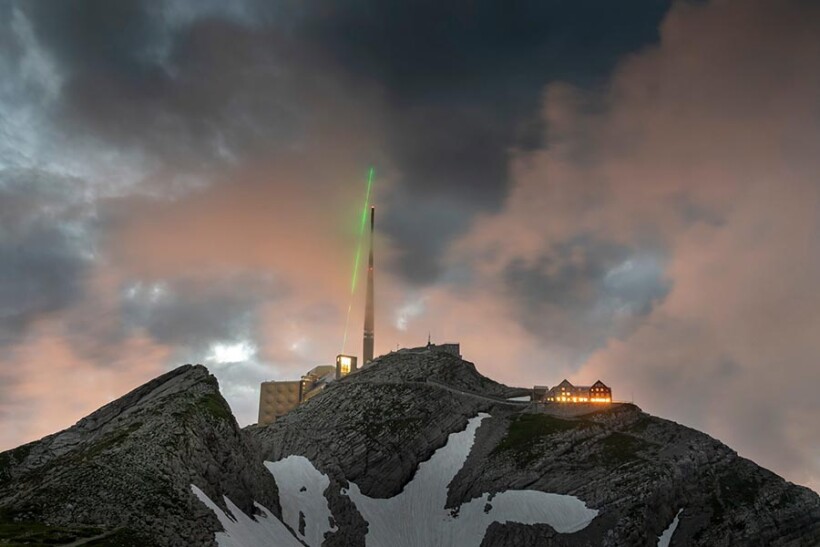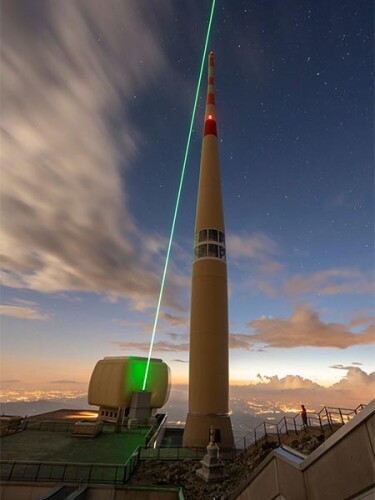Lightning strikes a laser rod

TRUMPF/Martin Stollberg
For about six stormy hours cumulatively between 21 July and 30 September 2021, a laser shot into the sky above the Säntis Tower in the Swiss Alps, as shown above. Researchers with the Laser Lightning Rod project watched to see if the intense laser pulses would guide lightning strikes to the tower’s lightning rod. And they did for four lightning strikes, one of which is shown in the photos below.

A. Houard et al., Nat. Photon. (2023), doi:10.1038/s41566-022-01139-z
Published last week, the results
Laser filaments, Day wrote, result in part from the dependence of the refractive index on light’s intensity:
“This intensity dependence, known as the optical Kerr effect, underlies the phenomenon of self-focusing. If a beam of light is brighter in the center than at the edges—as most are—the center will encounter a bigger refractive index and slow down. Wavefronts that start out planar will therefore collapse about the center. A tighter beam results.”
In air, self-focusing sets in only for light beams with powers above several gigawatts; the new work well exceeds that threshold with a terawatt laser. Filaments require that the self-focusing be counterbalanced. That, Day wrote, is where ionization comes in:
“When self-focusing pushes [the intensity] above 1014 W cm−2, multiphoton ionization creates a plasma, whose refractive index, being less than air’s, causes the beam to defocus. Without self-focusing to boost it, [the intensity] drops below the ionization threshold. The Kerr effect switches back on, and self-focusing resumes. The filaments’ propagation depends, therefore, on a quasi-dynamic equilibrium between Kerr focusing and plasma defocusing.”

A. Houard et al., Nat. Photon. (2023), doi:10.1038/s41566-022-01139-z
A laser filament heats the air molecules in its path, and the molecules shoot radially outward at supersonic speed, leaving behind a low-density region. That reduced-density channel has a higher conductivity and thus offers a favorable path for lightning. But unlike a traditional metal lightning rod, a laser lightning rod can reach high into the sky and guide strikes in any direction, features that offer more protection.
A lightning rod protects an area whose dimensions are roughly equal to the rod’s height. The current design, shown to the right, effectively increased the metal rod’s height by 60 m, but in the future, researchers aim to increase the laser’s reach by an order of magnitude. (A. Houard et al., Nat. Photon., 2023, doi:10.1038/s41566-022-01139-z